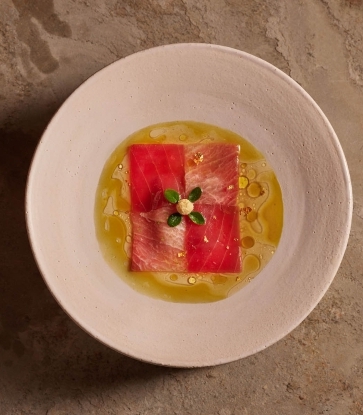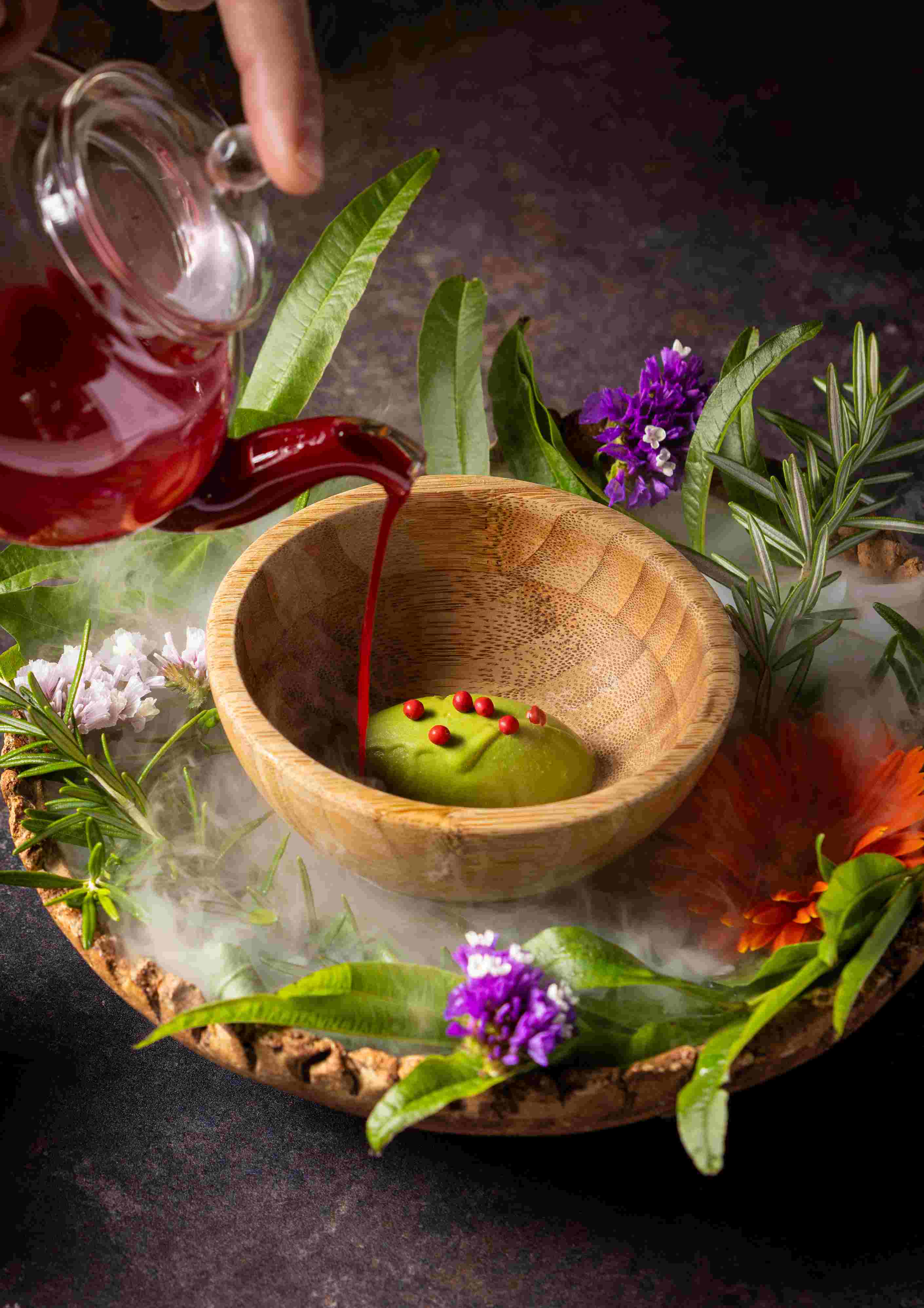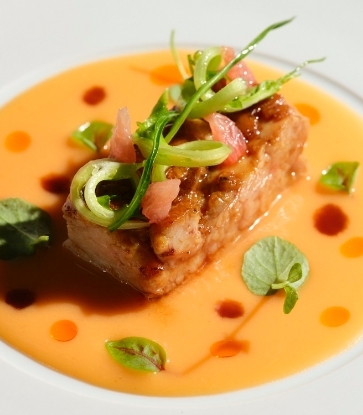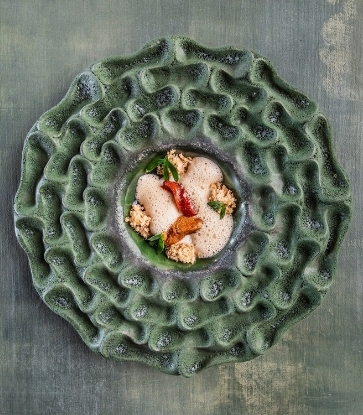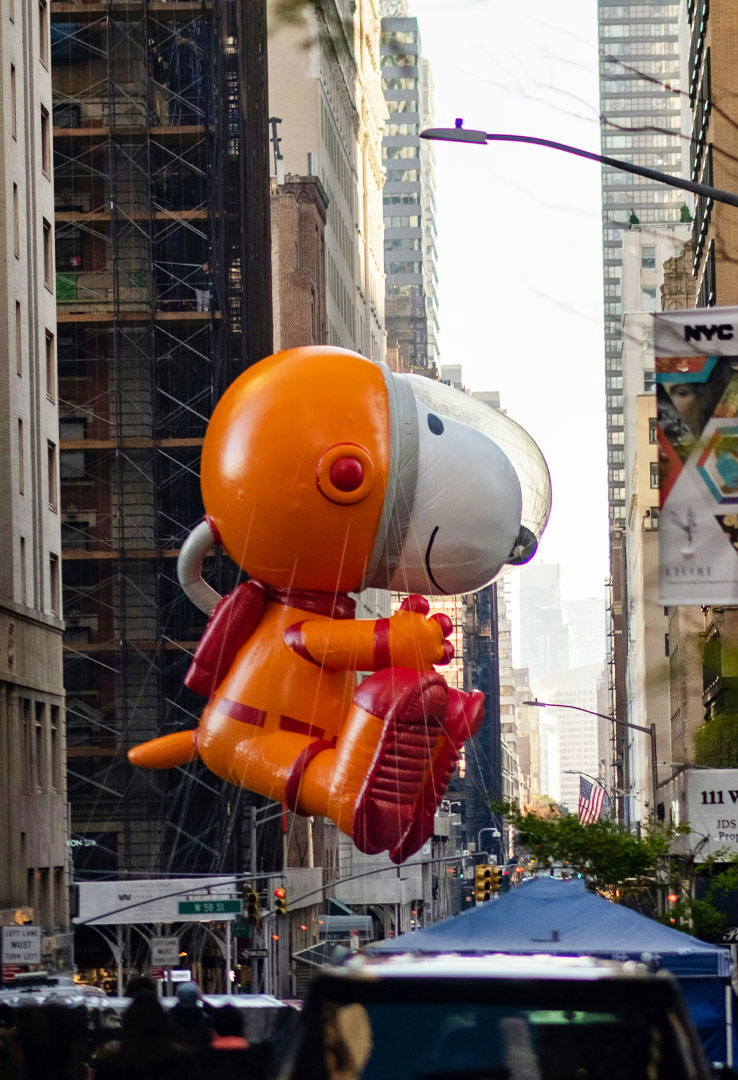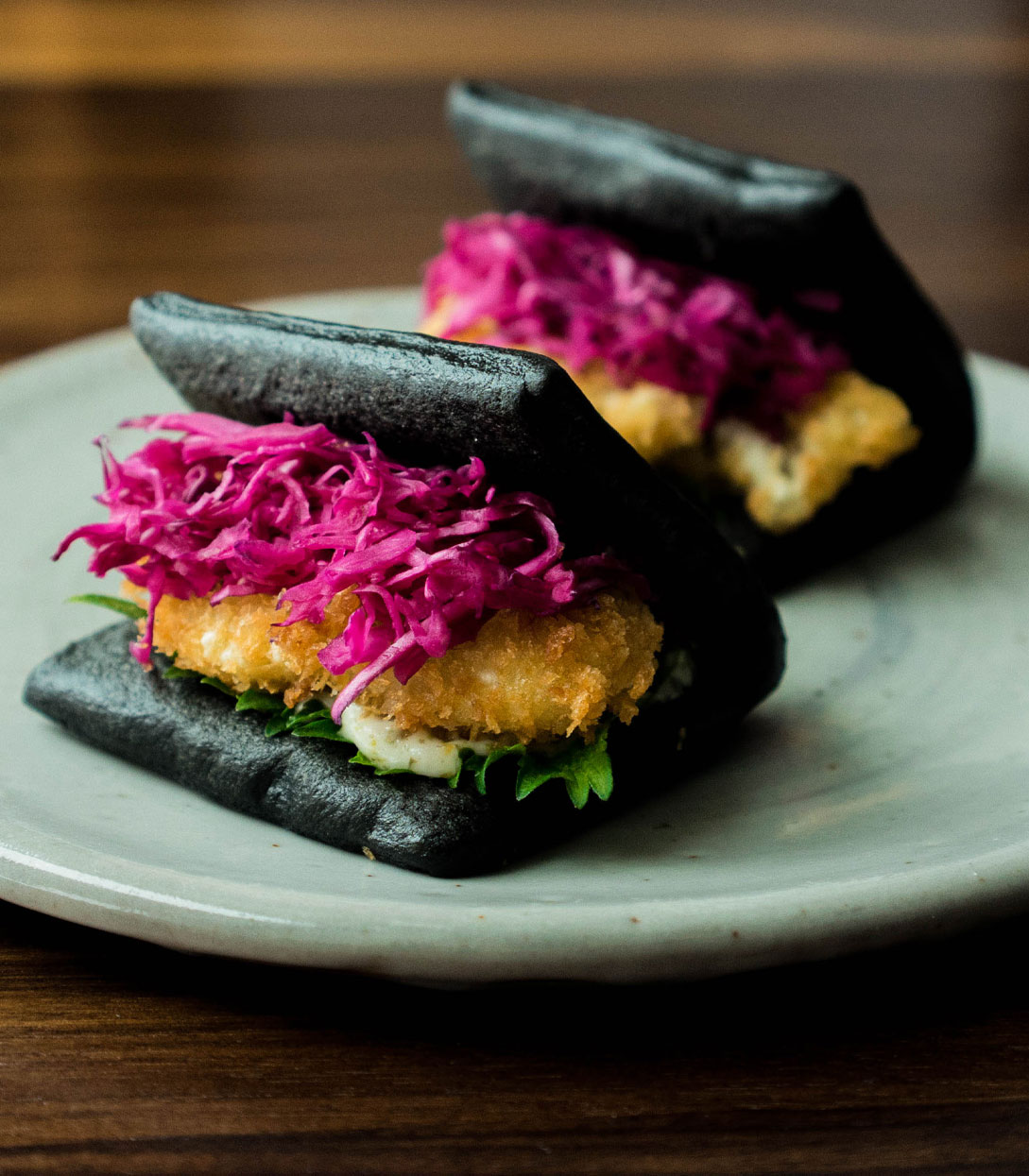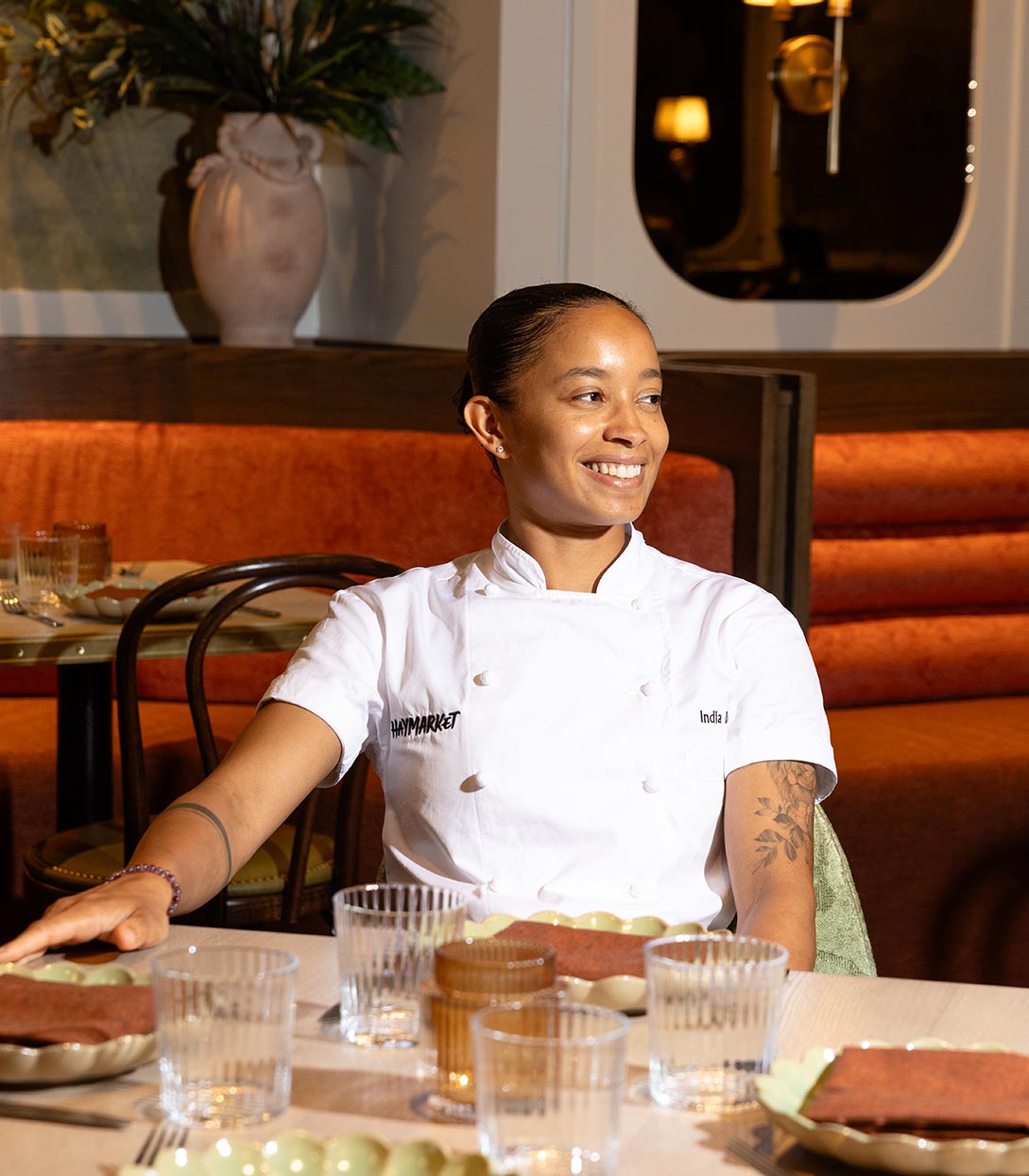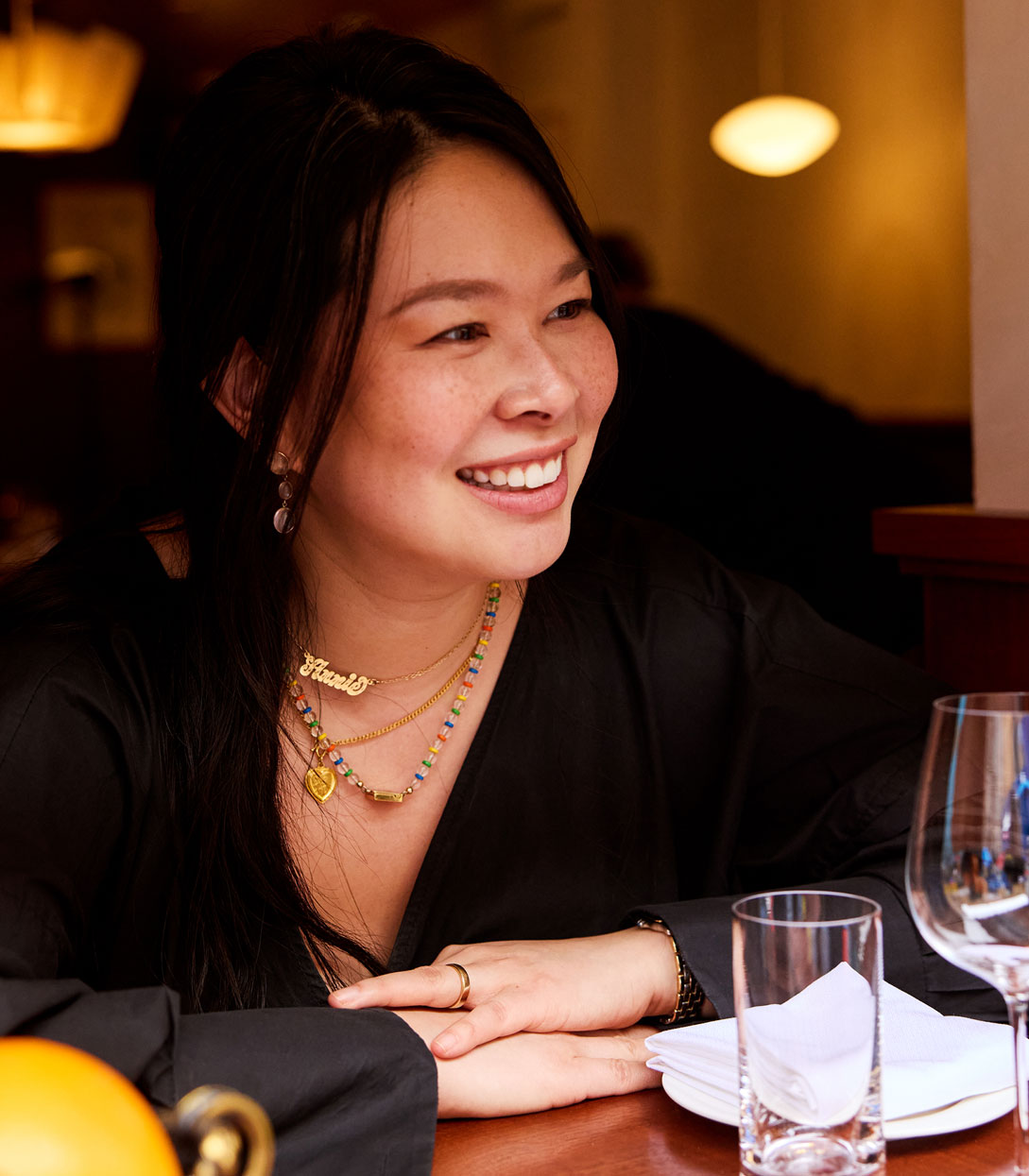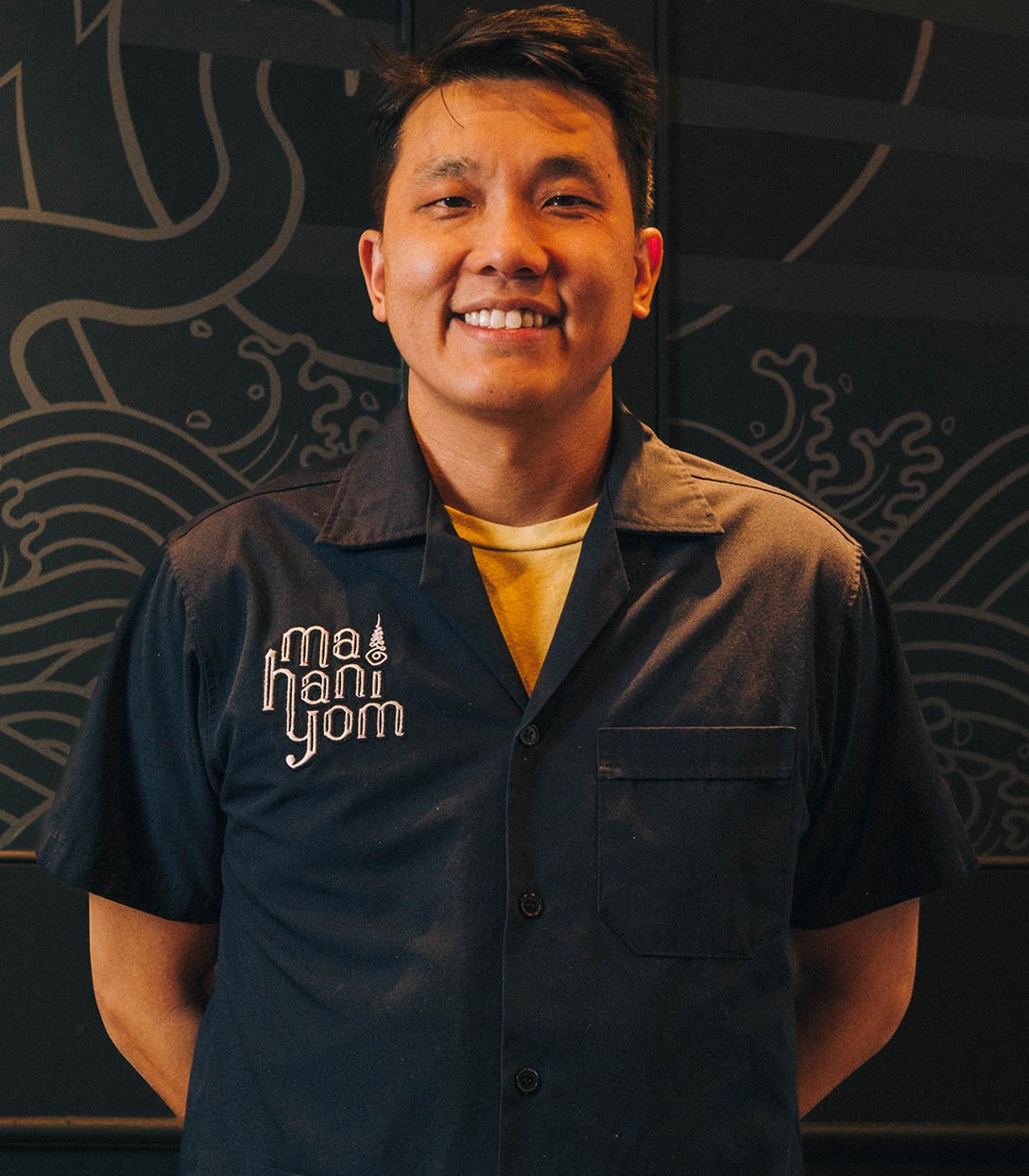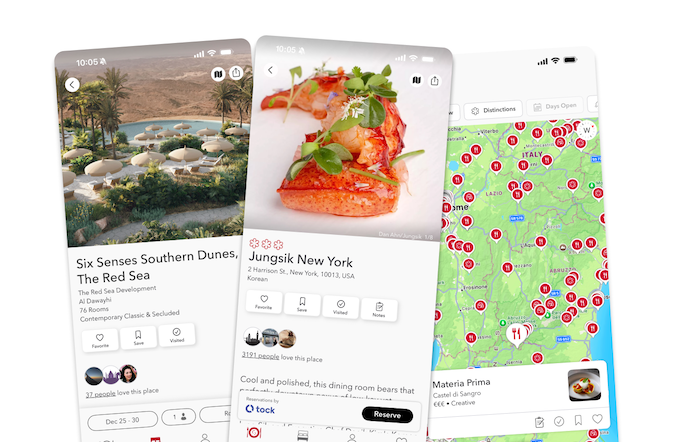When Nick Peyton, the maître d' and owner of Cyrus in Sonoma County, California, started in the industry, the role of the front of house chief was “all-powerful,” he remembers in an interview.
Back in the 1970s, “maître d's were an imperious lot,” he says. “You had to prove yourself to the restaurant, which was something that I always thought was completely upside down.”
After a career spanning some of the most iconic hospitality locales in northern California, Peyton and his partner, Chef Douglas Keane, have achieved the antidote to the traditional snooty fine dining experience with their One-MICHELIN-Star tasting menu.
An evening at Cyrus is modeled like a dinner party, with guests led through rooms by a welcoming host and encouraged to nibble in the kitchen.
“We do a really good job of being formal in our mechanics and serious in our mechanics, but we don't take ourselves seriously,” Peyton says. “It's just a warm, friendly interchange.”
In an interview edited for length and clarity, the winner of this year’s MICHELIN Guide California Service Award, presented by Capital One Dining, discusses his path through the service world, his fine dining philosophy, and the eight-foot chocolate fountain that caps every meal at Cyrus.
Walk us through a guest's evening at Cyrus.
We feature something that we call the Dining Journey, where guests arrive into what we call our Bubbles Lounge. It looks out above the vines over the northern part of the Alexander Valley. There's views out over Geyser Peak and all the way down south into Napa Valley, Mount Saint Helena. We welcome the guest with a little treat and figure out their beverage for the moment or maybe for the evening, and they get to relax and settle into the place and become acclimated, much like when you invite somebody to a dinner party into your living room and have a couple of little bites.
We do seatings of 12, so next we invite all 12 guests into the kitchen, where there is a U-shaped, counter-height butcher block table set looking out over the whole kitchen. There's a table at the head of that U where the chefs actually prepare the guests' six appetizer-sized dishes right in front of them. It's very interactive with the line cooks and the chefs. They do much of the serving, and everyone's invited to walk around the kitchen. In fact, a couple of the bites are actually served at the stations in the kitchen. The guests are invited to ask questions of all the line cooks and interact with the chef.
From there, we move into the dining room. The dining room is a glass box, again with gorgeous views. Usually there's some sort of evening light change. We're east-facing so we don't have to struggle with shades or anything like that. This is much more of what you'd expect in terms of formal dining. These are plated courses – about seven courses are served here.
From there, we go to a little magic Chocolate Room as a sort of whimsical end to the evening. We give them a beautiful little hot chocolate, a nice box of chocolates to take home, a copy of everything that they ate and drank that evening, and a chance to make a wish into this eight-foot wall of flowing chocolate. They toss a little chocolate coin in there as a last wish.
The basic idea is that of a dinner party where you come into a person's living room, have a few bites, then you go see what the host is doing in the kitchen, and your host shoos you into the dining room for dinner. But of course, nobody's got a Chocolate Room to end the evening.

Where did that idea of breaking up the traditional seating into this kind of a journey come from?
Both (Chef Douglas Keane) and I had been city dwellers, in San Francisco and in New York, where Doug had worked a lot. People always had multiple things that they expected out of the evening. It was dinner and a show, dinner and the theater, dinner and drinks with friends afterwards. There was always a multiplicity of experience. But when people are up here in wine country, dinner is sort of the whole evening. But we found that people got antsy. Even in the last Cyrus, you would have people ask questions, like, ‘Is this the main course?’ Basically what they were kind of indicating to you is that they were getting a little bit itchy in their seats. So we thought that this would be a good way to refresh the experience. Yes, you want a full evening's experience – entertainment, communion over the table – but by breaking it up into separate experiences, you refresh it and the evening would kind of fly by.
We really did sort of achieve that. We don't experience that, ‘How many more courses?’ kind of question anymore. And we do more dishes. Back at the last Cyrus we were doing nine to 11 different bites. Here we're up in the high teens, getting towards 20 separate bites and yet you don't get people going, ‘Oof, this is getting long.’
What do you hope a guest is thinking as they leave?
There are restaurants that don't follow this philosophy, but one of the things that I've always believed in is that what the guest is looking for out of their experience, that communion that happens at the table, is their communion, not our stamp. I don't feel that people come here and I want to make sure they have this particular impression. We get people who are here for special occasions, we get people who are sort of gourmet travelers, we get people who are here to consummate a business deal. Everyone's got a different purpose for being here. But what I like is that people at the end of the meal have a certain catharsis, that this was an elevating experience that leaves them recharged. You know, when you've hit it. We get people who, at the end of the evening, want to hug us, and to me that's pretty wonderful.

Tell us how you arrived to this position at Cyrus.
Chef and I have actually been working together for 27 years now. I was a hippie. I was a child of the 60s and I was both a ski bum and a world traveler. One of the things that worked perfectly for the way I wanted to live was hospitality. Whether I worked in a bar or a casino or a nightclub or a restaurant, I could get a job anywhere I wanted, anywhere in the world. I didn't even have to speak the language and I could get a job. In about my mid 20s, I got married and had a child, followed by a second one, and I realized that I needed a more formal career. For me, this was what I loved doing, so I went, ‘Let's make a career out of this.’ I went back to hotel and restaurant school. I had one vision: I wanted to be the maître d' of a fine restaurant.
I worked very hard – first for the Fairmont Hotel. They had a restaurant called the Squire Room in San Francisco, and I was their maître d'/manager for many years. It was very old school, a lot of tableside service-kind of restaurant. Then there was a restaurant called Masa’s in San Francisco. At the time it was the top rated restaurant in the city, and they invited me to come be the maître d' there. And then The Ritz-Carlton Hotel in San Francisco invited me to come in and be the founding manager/maître d' at their restaurant, and it just seemed to me to be able to establish the work culture and the service and the style and the concept from the beginning was something that I really wanted to embrace.
The chef there was a man by the name of Gary Danko. Gary and I decided to start our own restaurant, his eponymous restaurant on North Point and Hyde, and we recruited Doug to be our opening sous chef. And in the course of that opening, Doug and I discovered we'd much rather work with each other, and so we managed to do that. We opened the first Cyrus in 2005 after we had a more neighborhood restaurant that we sort of had as a stopgap restaurant. That's how the journey started to this restaurant here.

How has the role of maître d' and restaurant service changed since you started? Would a dining experience like Cyrus’ have been possible back then?
I started in this industry back in the 70s. And back in the 70s, the front of house was sort of all-powerful. People didn't really know the chefs as much. It really was about the front of the house and maître d's were an imperious lot; you had to be sort of known. Was the maître d' going to recognize you? Were they going to take care of you? You had to prove yourself to the restaurant, which was something that I always thought was completely upside down, and there was a stiff formality to service back in those days. It was something that I always found anathema. For me, the mechanics of service should be exact – you perform things in a professional and set way – but the personality should be completely your own, and it should not be anything less than a warm, friendly, peer-to-peer relationship. The service you provide, it's not a rogue exercise, it is in relationship to the guest you're looking after. You have to have some empathy and some insight and know how to step in and out and how to take care of people. So, I think we do a really good job of being formal in our mechanics and serious in our mechanics, but we don't take ourselves seriously, nor do we behave in a serious manner with the guests. It's just a warm, friendly interchange.
The other thing that is kind of unique about our restaurant is that the front of house and the back of house are paid in the same manner. Everyone makes what we consider a career wage. If you worked every day throughout the year, other than the weeks that we’re closed, you would be making around $75,000 a year. So, the back of house is as interested in the guest as the front of house. They are all trained in how to deliver the food and how to explain the food. They are comfortable talking to the guests that way. When they're in the kitchen and there are guests walking around looking over their shoulders, they're not uncomfortable. And it makes for, I think, something quite special that people don't find in other restaurants.

Hero image: Cyrus / Nick Peyton



